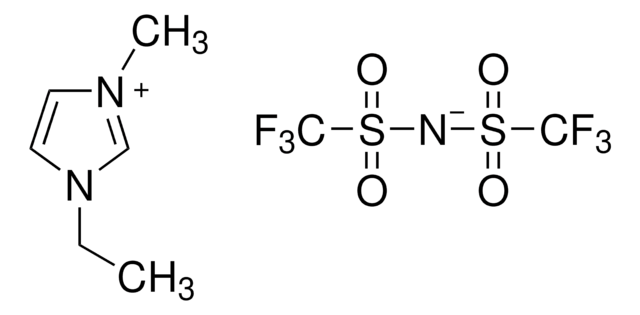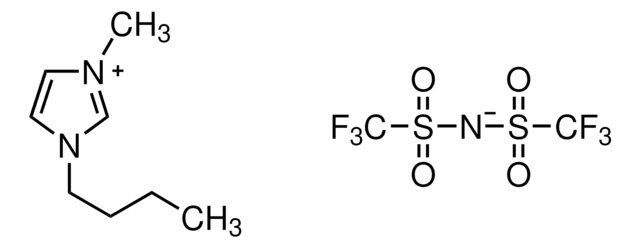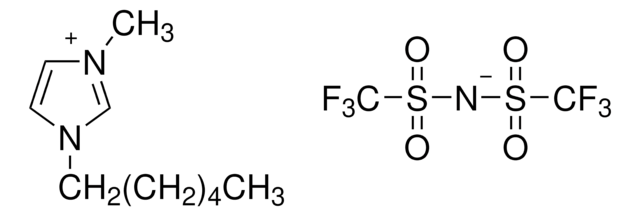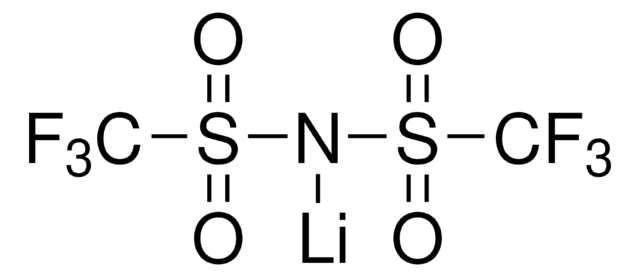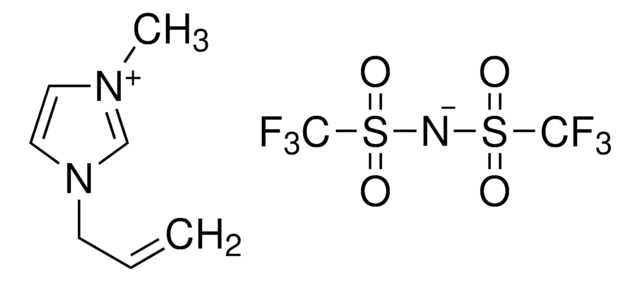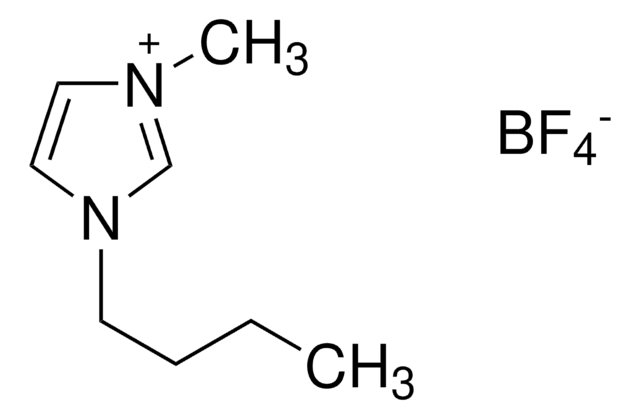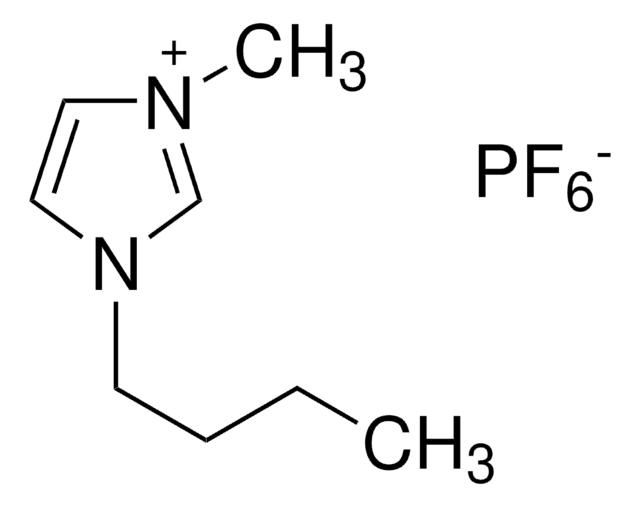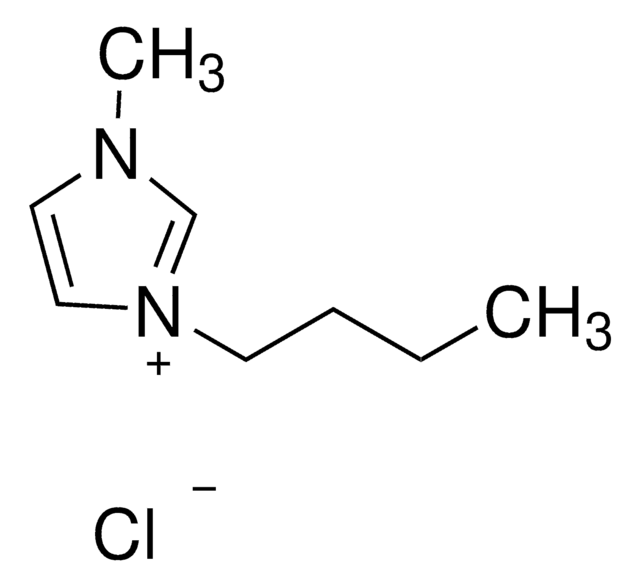900802
1-Butyl-3-methylimidazolium bis(trifluoromethylsulfonyl)imide
≥99%, H2O <500 ppm
Sinonimo/i:
1-Butyl-3-methylimidazolium bis(trifluoromethanesulfonimide) salt, 1-Butyl-3-methylimidazolium bis(trifluoromethanesulfonyl)amide, 1-Butyl-3-methylimidazolium bis(triflyl)imide, BMIIm, BMIM TFSI
About This Item
Prodotti consigliati
Livello qualitativo
Saggio
≥99%
Stato
liquid
Composizione
H2O, <500 ppm
Impurezze
≤500 ppm H2O
Punto di fusione
1 °C
Densità
1.454 g/cm3
applicazioni
battery manufacturing
Stringa SMILE
CCCCn1cc[n+](C)c1.FC(F)(F)S(=O)(=O)[N-]S(=O)(=O)C(F)(F)F
InChI
1S/C8H15N2.C2F6NO4S2/c1-3-4-5-10-7-6-9(2)8-10;3-1(4,5)14(10,11)9-15(12,13)2(6,7)8/h6-8H,3-5H2,1-2H3;/q+1;-1
INDFXCHYORWHLQ-UHFFFAOYSA-N
Cerchi prodotti simili? Visita Guida al confronto tra prodotti
Descrizione generale
Applicazioni
Prodotti correlati
Avvertenze
Danger
Indicazioni di pericolo
Classi di pericolo
Acute Tox. 3 Dermal - Acute Tox. 3 Oral - Aquatic Chronic 2 - Skin Corr. 1B - STOT RE 2 Oral
Organi bersaglio
Nervous system
Codice della classe di stoccaggio
6.1C - Combustible acute toxic Cat.3 / toxic compounds or compounds which causing chronic effects
Classe di pericolosità dell'acqua (WGK)
WGK 2
Punto d’infiammabilità (°F)
Not applicable
Punto d’infiammabilità (°C)
Not applicable
Scegli una delle versioni più recenti:
Certificati d'analisi (COA)
Non trovi la versione di tuo interesse?
Se hai bisogno di una versione specifica, puoi cercare il certificato tramite il numero di lotto.
Possiedi già questo prodotto?
I documenti relativi ai prodotti acquistati recentemente sono disponibili nell’Archivio dei documenti.
I clienti hanno visto anche
Articoli
Dr. Sun reviews the recent advances in solid-state rechargeable batteries and cover the fundamentals of solid electrolytes in solid-state batteries, the theory of ion conduction, and the structures and electrochemical processes of solid-state Li batteries.
Here, we present a short review of ionic liquid electrolytes used in state-of-the-art rechargeable batteries including high performance and low-cost aluminum batteries, non-flammable Li-based batteries, and high-cycling and stable dual-graphite batteries. We also outline the key issues explored so as to identify the future direction of IL development.
Global Trade Item Number
| SKU | GTIN |
|---|---|
| 900802-25G | 4061834427551 |
Il team dei nostri ricercatori vanta grande esperienza in tutte le aree della ricerca quali Life Science, scienza dei materiali, sintesi chimica, cromatografia, discipline analitiche, ecc..
Contatta l'Assistenza Tecnica.